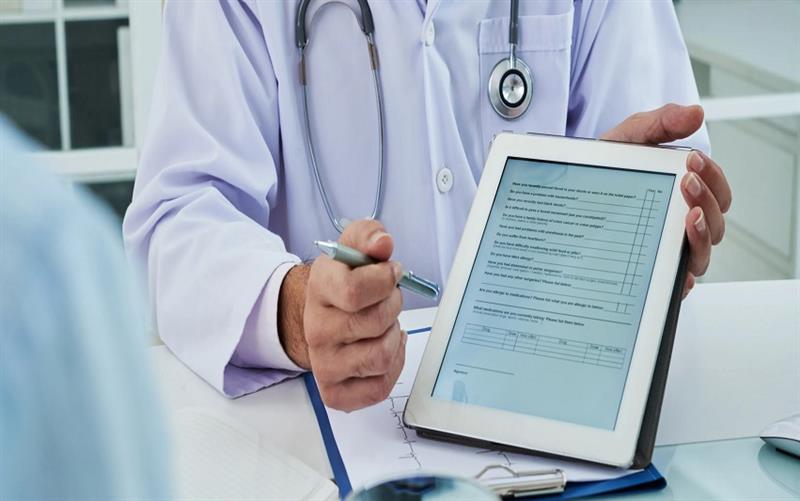
Making the transition to an EHR system is much more than simply becoming digital; it's about changing how your medical practice operates. The advantages of EHR software are obvious, quantifiable, and long-lasting, ranging from improving patient care to increasing operational efficiency.
One of the best investments you can make if you're prepared to update your practice, improve compliance, and provide better treatment is to implement an EHR system.
Electronic Health Record (EHR) software is now a need for contemporary medical practices in a time when technology permeates every part of our life. The advantages are extensive and significant, ranging from enhancing patient safety and care coordination to optimizing processes, increasing income, and guaranteeing regulatory compliance.
By putting in place a strong EHR system, you're doing more than just digitizing your records; you're making your practice as a whole more patient-centered, responsive, and efficient. It's a calculated action that improves clinical judgment, gives your employees greater authority, and fosters closer, more active bonds with your patients.
1. Improved Patient Care and Safety
Better treatment choices and more accurate diagnoses are made possible by the comprehensive, real-time view of a patient's medical history provided by electronic health records, or EHRs. Lab results, past medications, allergies, vaccinations, and medical histories are all accessible to clinicians in a single location. This lowers the possibility of medical mistakes like missed diagnosis or drug interactions. In order to improve patient safety and results, built-in alerts can inform healthcare professionals of important lab results, possible allergies, or dangerous drug combinations.
2. Greater Efficiency and Time-Saving
EHRs automate time-consuming activities to streamline daily operations. Manual procedures are no longer necessary thanks to features like digital check-ins, online appointment scheduling, and automatic reminders. Voice dictation tools and pre-made templates speed up the documentation process. Doctors can save time during and between appointments by charting in real-time, accessing patient data instantaneously, and avoiding the need to search through paper files.
3. Enhanced Practice Productivity
Higher productivity stems from greater efficiency. EHRs allow physicians to visit more patients without compromising the standard of care. Providers may finish documentation more quickly because to standardized templates and quicker information access, and front desk employees gain from streamlined processes including connected billing systems and automated coding recommendations. As a result, the process from patient intake to check-out runs more smoothly overall and there are fewer administrative bottlenecks.
4. Secure and Compliant Data Management
EHR systems are designed to abide by laws like HIPAA (Health Insurance Portability and Accountability Act) that protect data. They consist of functions including user authentication, password security, data encryption, and audit trails, which keep track of who has viewed or changed data. Frequent data backups and cloud-based access guarantee that patient records are safe and available even in the event of crises like hardware malfunctions or natural catastrophes.
5. Better Medication Management
EHRs use integrated e-prescribing (eRx) capabilities to streamline prescription administration. By sending prescriptions straight to pharmacies, doctors can minimize mistakes brought on by unclear handwriting or misunderstandings. Medication errors are greatly reduced by the software's ability to look for any drug interactions, allergies, or redundant therapy. By viewing refill history and marking missing prescriptions, you can also keep an eye on patient adherence.
6. Improved Patient Engagement
Secure patient portals are a feature of many EHR platforms that allow patients to message their healthcare providers directly, make appointments, examine test results, obtain prescription refills, and access their medical data. By enabling patients to actively participate in their care, these tools promote treatment compliance, foster greater trust, and boost patient satisfaction. Patients who are actively involved are more likely to adhere to their treatment programs and show up for follow-up appointments.
7. Streamlined Billing and Insurance Claims
EHR systems automatically gather information from patient visits to generate accurate claims, integrating clinical documentation with billing procedures. This expedites the insurance reimbursement cycle and reduces coding errors. Practices can confirm a patient's insurance status prior to a visit using real-time eligibility checks, and rejection management technologies facilitate the more effective tracking and appeal of denied claims. In the end, this results in less administrative hassle and better revenue flow.
8. Better Care Coordination and Interoperability
EHRs make it easy for hospitals, pharmacies, labs, specialists, and healthcare providers to share patient data. Every healthcare professional participating in a patient's treatment can remain informed and on the same page because to this interoperability. A primary care physician, for instance, can rapidly study the notes of a specialist or a summary of a recent hospital discharge. As a result, there are fewer redundant testing, better continuity of care, and a more cooperative care setting.
9. Real-Time Analytics and Reporting
Dashboards and analytics tools are included into modern EHRs to assist you in tracking practice performance. Clinical outcomes, provider productivity, and patient populations by condition (e.g., diabetes, hypertension) can all be tracked. Additionally, EHRs produce the reports needed for government incentive schemes such as MIPS and MACRA. Practices can use this information to make well-informed decisions that will enhance care quality, maximize resources, and accomplish strategic objectives.
10. Scalability and Customization
EHR systems are not universally applicable. Whether you're a solo practitioner or managing a multi-location healthcare organization, EHR software can be tailored to your specific needs. Practices may scale the software as they expand or change thanks to modular features, customized processes, and specialty-specific templates (such as those for cardiology, pediatrics, and dermatology). The versatility and value of EHRs are further increased by the fact that many of them integrate with telehealth systems and provide mobile access.